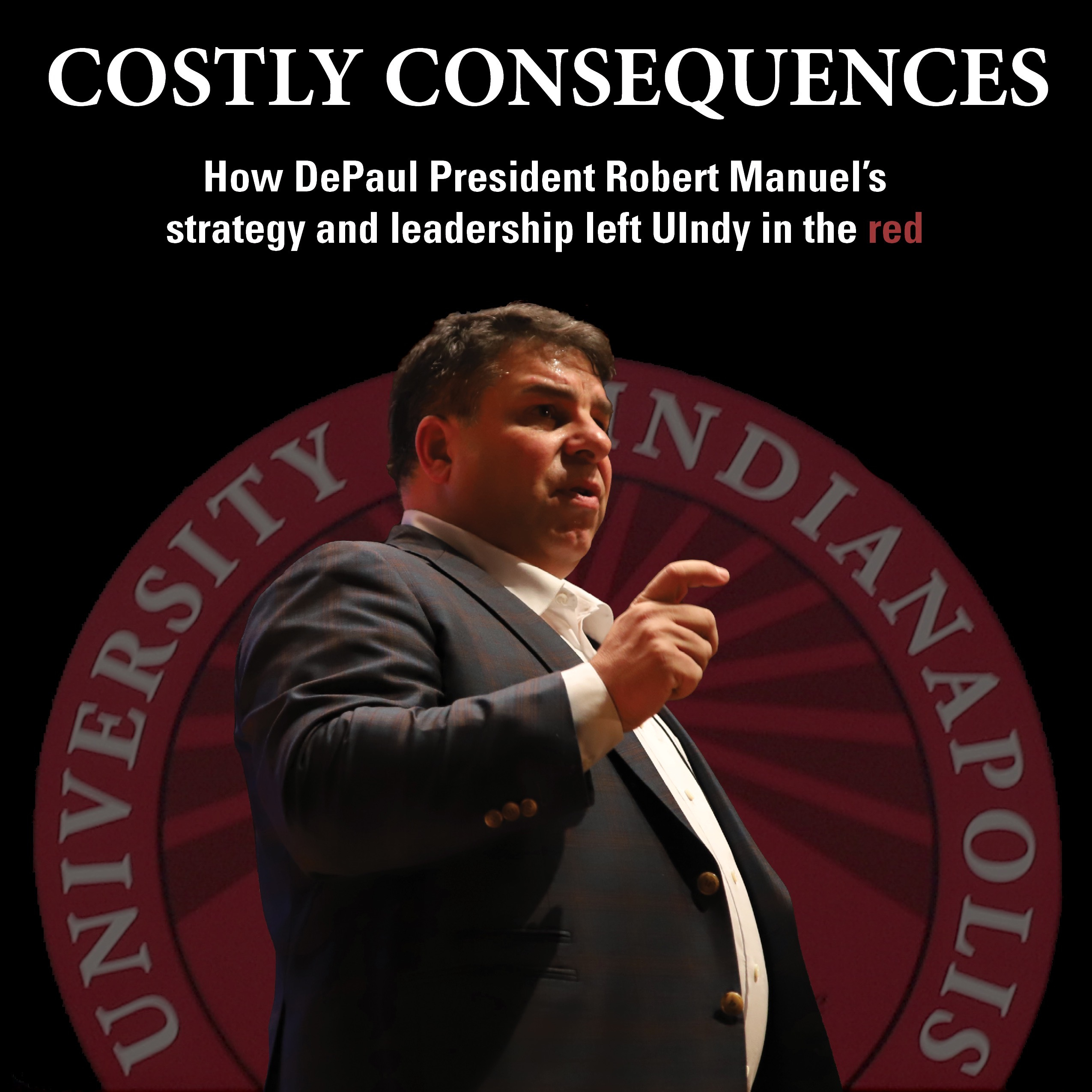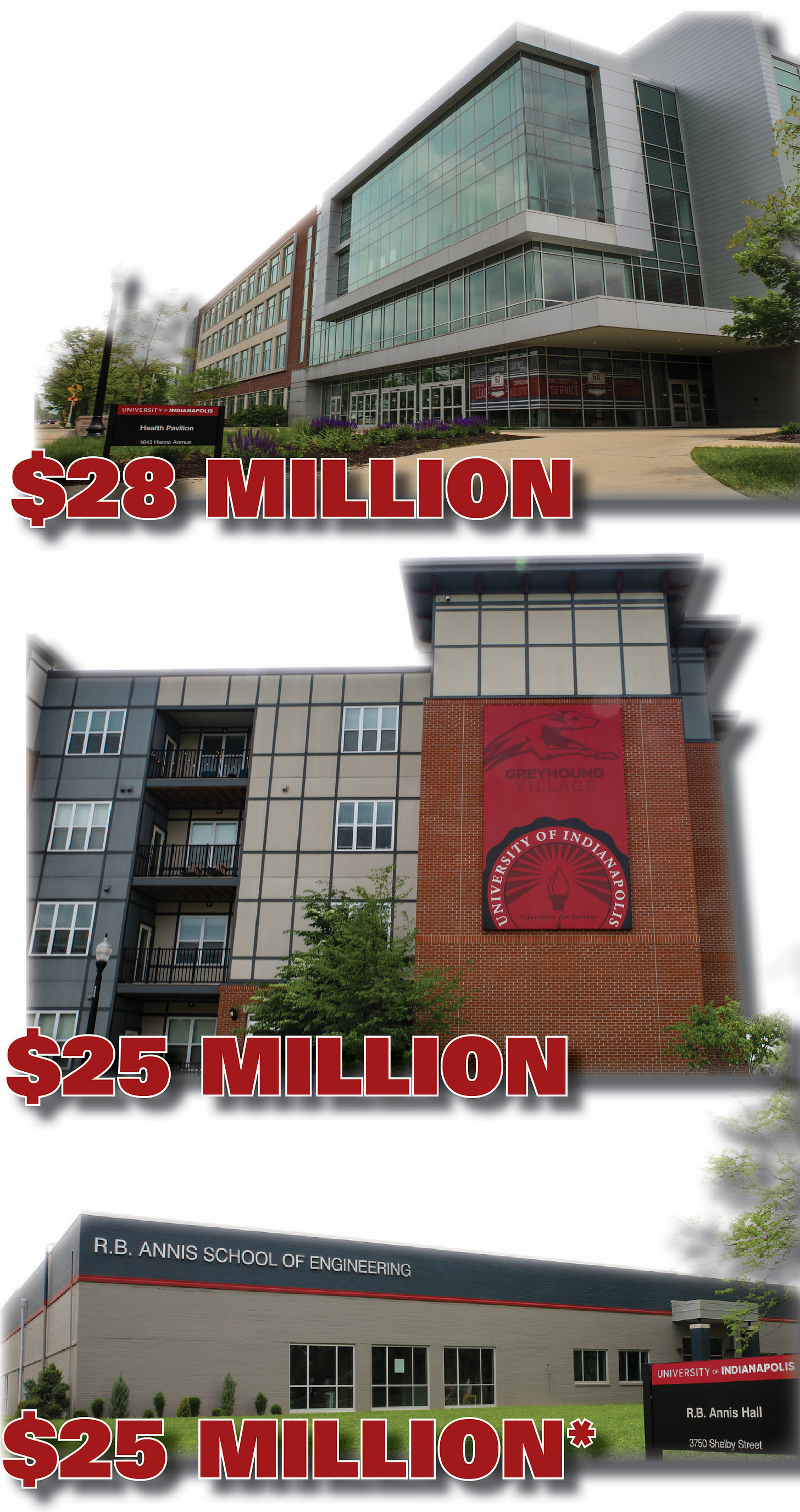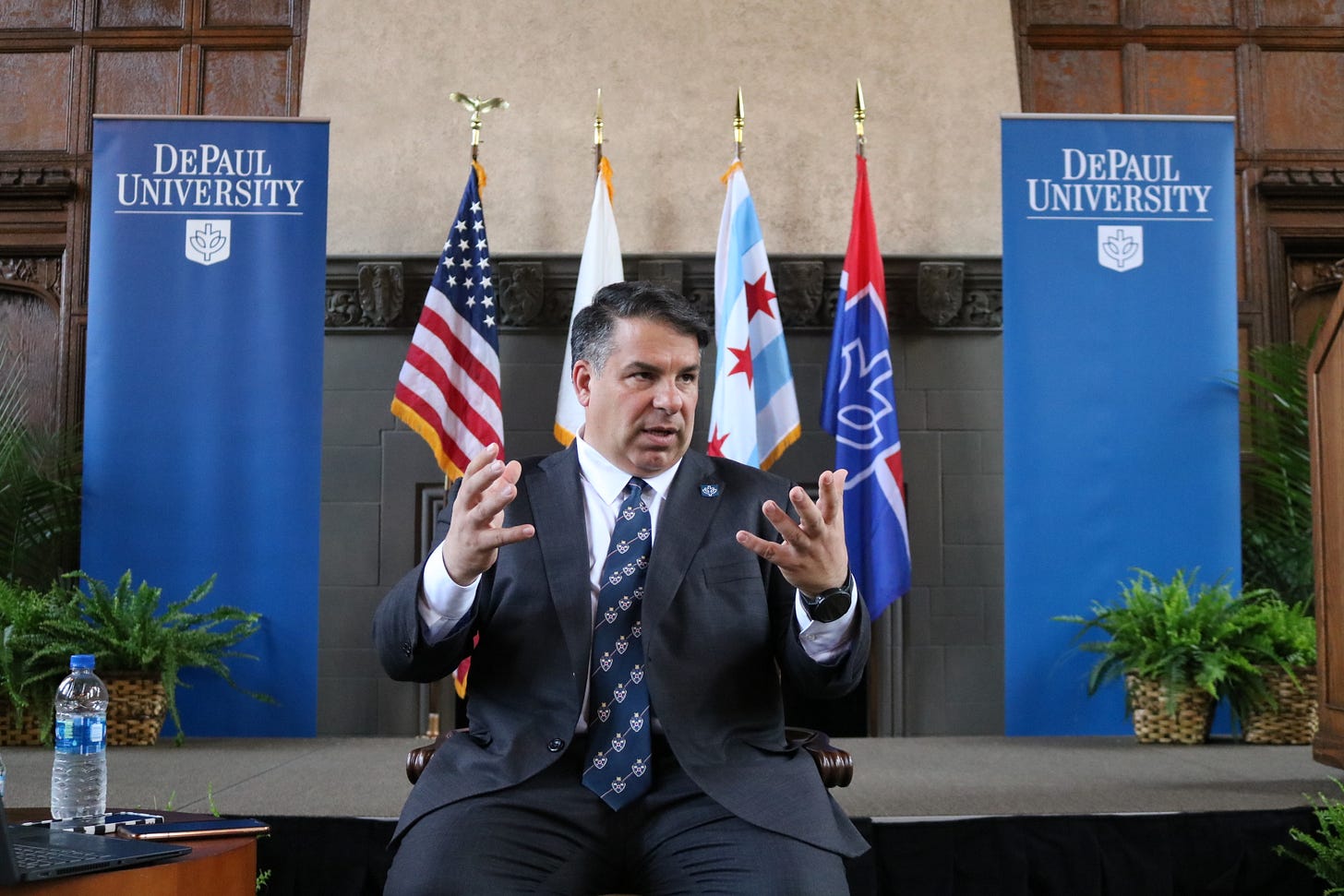BREAKING: Costs and consequences - How DePaul President Robert Manuel’s ‘unilateral’ financial approach, leadership left UIndy in the red
The DePaulia Newsletter
Costs and consequences:
How DePaul President Robert Manuel’s ‘unilateral’ financial approach, leadership left UIndy in the red
Patrick Sloan-Turner, Online Managing Editor
Editor’s note: A number of sources in this story were granted anonymity, fearing that revealing identities could affect their current and future employment. The DePaulia’s advisor and managing editorial staff have independently vetted each one of the sources involved in this story’s reporting.
More than a decade ago, Robert Manuel used a metaphor at his presidential inauguration ceremony at the University of Indianapolis (UIndy) to convey a vision for the future of the institution, then under his helm.
To a crowd of colleagues, politicians, faculty and others at Nicoson Hall on UIndy’s campus in Indianapolis, he quoted another who held the president’s seat before him.
“There’s a reason why our rearview mirrors are so much smaller than our windshields,” Manuel said.
When Manuel spoke to another group of new constituents nearly 10 years later, after it was announced that he would take over as DePaul’s president, the same metaphor would likely have resonated with a welcoming crowd inside DePaul’s Courtelyou Commons.
Much of DePaul faculty, staff and students only wanted to look forward. Few were shy of sharing their disaffection with Manuel’s predecessor, A. Gabriel Esteban. It was no secret that DePaul was struggling with revenue and enrollment. Desperate for a leader who would put the university in drive, the community embraced Manuel.
In May 2022, with so much excitement in DePaul’s own windshield, little focus was on the new president’s rearview, whose objects might have been more troubling than it first appeared.
Now, DePaul and its newest president are tasked with navigating itself through an historic budgetary crisis. But a closer look into the past of the man tasked with leading DePaul through this crisis reveals a decade of poor financial decisions, leadership described as “despotic” and a school in Indiana left in a crisis of its own.
Capital consequences in Indiana
Before coming to DePaul last spring, Manuel spent 10 years as the president of UIndy.
Manuel’s efforts and vision at UIndy appeared to center on physical growth and expansion. A drive through the school’s 50-acre campus today looks significantly different than it did when Manuel took over in 2013.
One of his earliest efforts, a $28-million, 160,000-square-foot health pavilion, broke ground in 2014. The construction progressed quickly, taking just 18 months to complete before opening the following year.The Keystone Group, a company that was awarded the contract and whose president and CEO, Ersal Ozdemir, sits on UIndy’s Board of Trustees, completed the project quickly.
Desperate at DePaul
While Manuel served the second half of his presidency in Indianapolis, 165 miles north in Chicago, A. Gabriel Esteban sat in DePaul’s president’s office from 2017-2022.
Much of Esteban’s tenure in Chicago proved to be an era focused on fiscal growth and increasing profitability. During the Esteban administration, DePaul’s endowment grew immensely, from a reported $492 million in 2017 to almost $1 billion by 2021.
Though it was a period of financial growth, by the time Esteban’s tenure neared its end, a contentious relationship had grown between the former president and contingents of DePaul faculty.
Since DePaul’s $56.5 million budget gap became widely known on April 10, several members of faculty shared the opinion that Manuel, SRAC and the provost’s office withheld information regarding the gravity of DePaul’s financial situation. In doing so, some felt they were required to make pivotal decisions regarding personnel cuts with little time and only fractional information.
In March and April, college deans and faculty leaders at DePaul were forced to make decisions resulting in the nonrenewal of term faculty contracts, departmental cuts and more.
A honeymoon ends
Throughout his tenure at UIndy, Manuel came across as well-liked to much of the public eye. He appeared at school sporting events and campus activities. Sources told The DePaulia that students generally saw him as engaging and fun.
Though their relationship would eventually tarnish, one former colleague of Manuel said that he was easy to be fond of early on.
“[There is a] honeymoon period with Rob,” said the former administrator. “He comes across as collaborative, jovial… then, about a year in, you find he’s not that way.”
Eventually, the former colleague left UIndy, and said they were far from the only one to depart, calling the staffing of administrative positions like vice presidents and deans a “revolving door” throughout the 2010s.
Indy in debt
Like DePaul, UIndy is a tuition-driven institution, with this revenue accounting for more than 65% of operating costs at the university. With a loss in enrollment, payment for these projects needed to be found elsewhere.
“[Manuel] borrowed from the endowment,” said the former administrator, first quoted in this story. “You never want to go borrowing from your endowment unless you have to. That’s a big deal. And he convinced the trustees that they’d get their money back in multiples.”
At least four times in Manuel’s tenure, UIndy borrowed from its endowment to help fund various development projects, according to figures published in annual independent audit reports and the school’s tax filings:
· In 2015, UIndy’s endowment was borrowed from twice. $4 million was loaned in June for housing investments, and a month later, $5.25 million was borrowed under three separate agreements to help fund “various capital projects.”
· In 2016, an additional $3.5 million was borrowed from the endowment for renovations. Four years later, more than $4.4 million was borrowed to pay for construction/renovation of UIndy’s new engineering building in July 2020.
Leading a ‘situation like the one he created’
Nearly a decade removed from his remarks and metaphors spoken to a welcoming crowd at his UIndy inauguration, Manuel once again donned academic regalia, this time, sporting royal blue and scarlet. On Nov. 11, 2022, to a mostly unfamiliar crowd at DePaul’s Holtschneider Performance Center, Manuel gave another inaugural address.
Though it is an excerpt from his speech that day in which he light-heartedly addressed the attendees he was indeed familiar with that – in hindsight – the DePaul community might find interesting.
“I have friends here from kindergarten, NYU, Georgetown, Allegheny and UIndy and it’s powerful to have you all here in one place… However, you’re not allowed to tell any pre-DePaul stories to anyone here at DePaul,” Manuel joked.
For many who worked with him at UIndy, Manuel’s “pre-DePaul” actions in Indianapolis are less than humorous.
“We feel very betrayed,” said a faculty member. “We feel hung out to dry… he ransacked our school and left.”
In Chicago, the future of DePaul faculty, trustees, administrators, students and staff now hangs upon the leadership of President Robert Manuel. Since April, DePaul has undergone cuts to full-time faculty and expects to see significant cuts to staff in June.
The budget gap has threatened academics too. The devastating cuts proposed to the library last month would have slashed nearly 50% of DePaul’s library resources if Manuel had not walked back the proposal after an uproar from faculty.
While Manuel did not create the situation at DePaul, it is his job to lead the school out of it.
One current UIndy faculty member shared with The DePaulia a message of advice for the DePaul community, in hopes that it does not soon find itself like UIndy, mending a “gaping” wound of its own.
“Watch your back, watch your purse strings…,” they said. “This is not someone that you can trust. It might seem like it, but it's not true.”
Read Patrick Sloan-Turner’s full article here →
This breaking newsletter was created by Amber Stoutenborough, Nadia Carolina Hernandez and Jake Cox.














